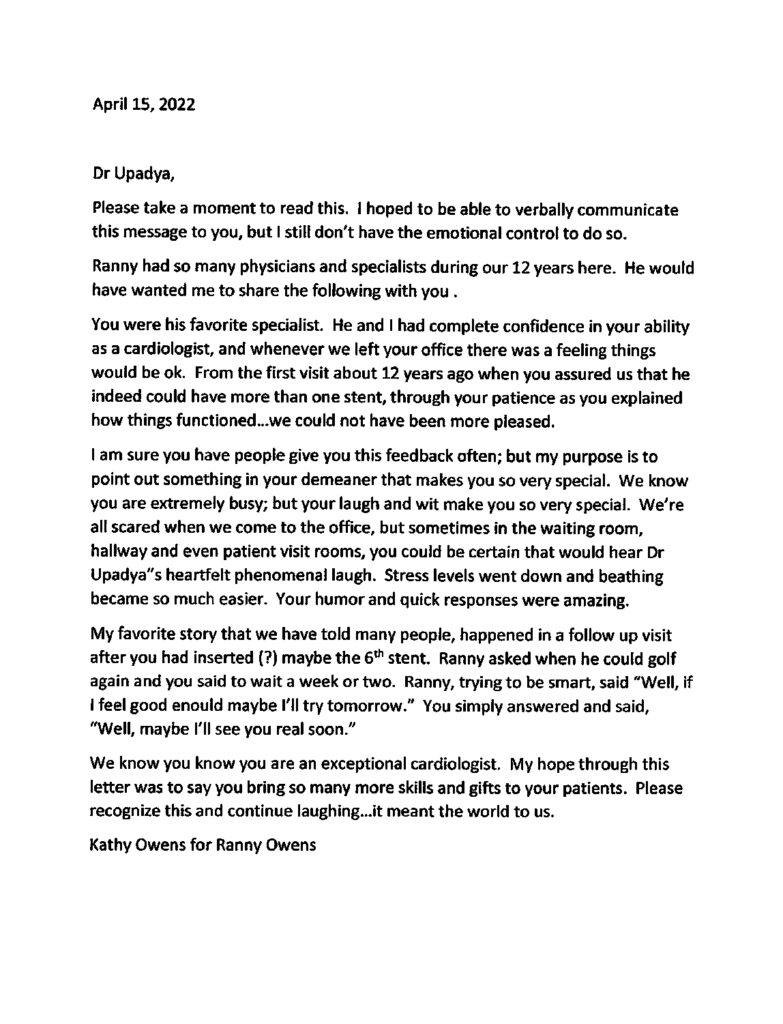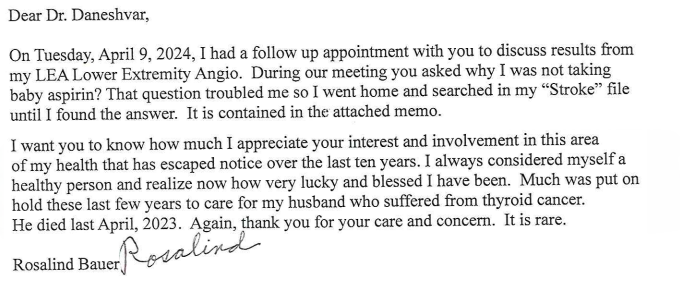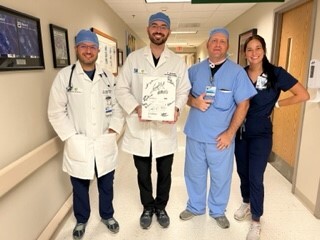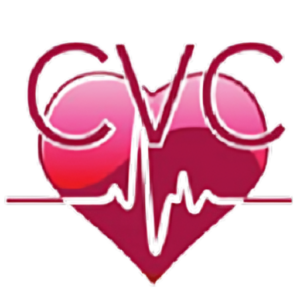Testimonials from our happy clients
Success Stories
Our Facebook Bulletin
A Thank you letter for Dr. Upadya


No more posts
Ground-Breaking Heart Monitoring Technique
Congratulations to Dr. Hassan Baydoun and Dr. Alaa Boulad for a successful CardioMEMS implantation performed at Citrus Memorial Hospital




